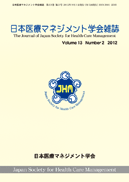Volume 11, Issue 1
Displaying 1-10 of 10 articles from this issue
- |<
- <
- 1
- >
- >|
Review Article
-
2010Volume 11Issue 1 Pages 2-14
Published: May 01, 2010
Released on J-STAGE: October 10, 2018
Download PDF (5790K)
Original Articles
-
2010Volume 11Issue 1 Pages 15-23
Published: May 01, 2010
Released on J-STAGE: October 10, 2018
Download PDF (1466K)
Case Reports
-
2010Volume 11Issue 1 Pages 24-30
Published: May 01, 2010
Released on J-STAGE: October 10, 2018
Download PDF (2050K) -
2010Volume 11Issue 1 Pages 31-35
Published: May 01, 2010
Released on J-STAGE: October 10, 2018
Download PDF (1128K) -
2010Volume 11Issue 1 Pages 36-40
Published: May 01, 2010
Released on J-STAGE: October 10, 2018
Download PDF (1331K) -
2010Volume 11Issue 1 Pages 41-45
Published: May 01, 2010
Released on J-STAGE: October 10, 2018
Download PDF (829K) -
2010Volume 11Issue 1 Pages 46-51
Published: May 01, 2010
Released on J-STAGE: October 10, 2018
Download PDF (631K)
Introductory Reports
-
2010Volume 11Issue 1 Pages 52-56
Published: May 01, 2010
Released on J-STAGE: October 10, 2018
Download PDF (3103K) -
2010Volume 11Issue 1 Pages 57-60
Published: May 01, 2010
Released on J-STAGE: October 10, 2018
Download PDF (1437K) -
2010Volume 11Issue 1 Pages 61-68
Published: May 01, 2010
Released on J-STAGE: October 10, 2018
Download PDF (1401K)
- |<
- <
- 1
- >
- >|
